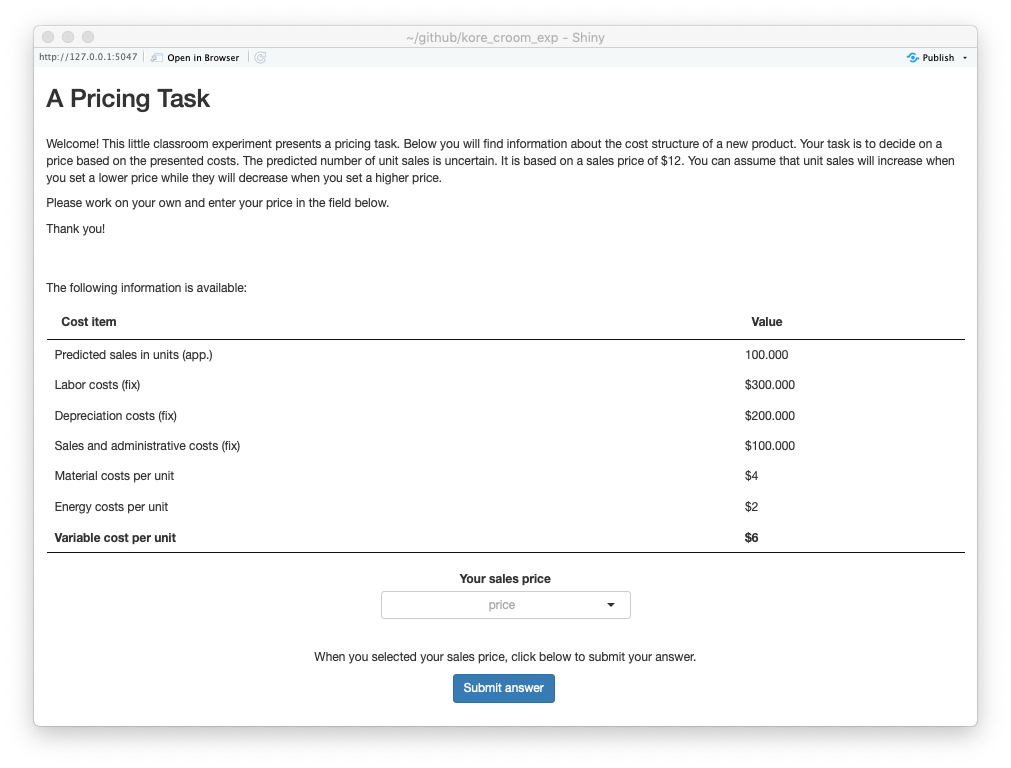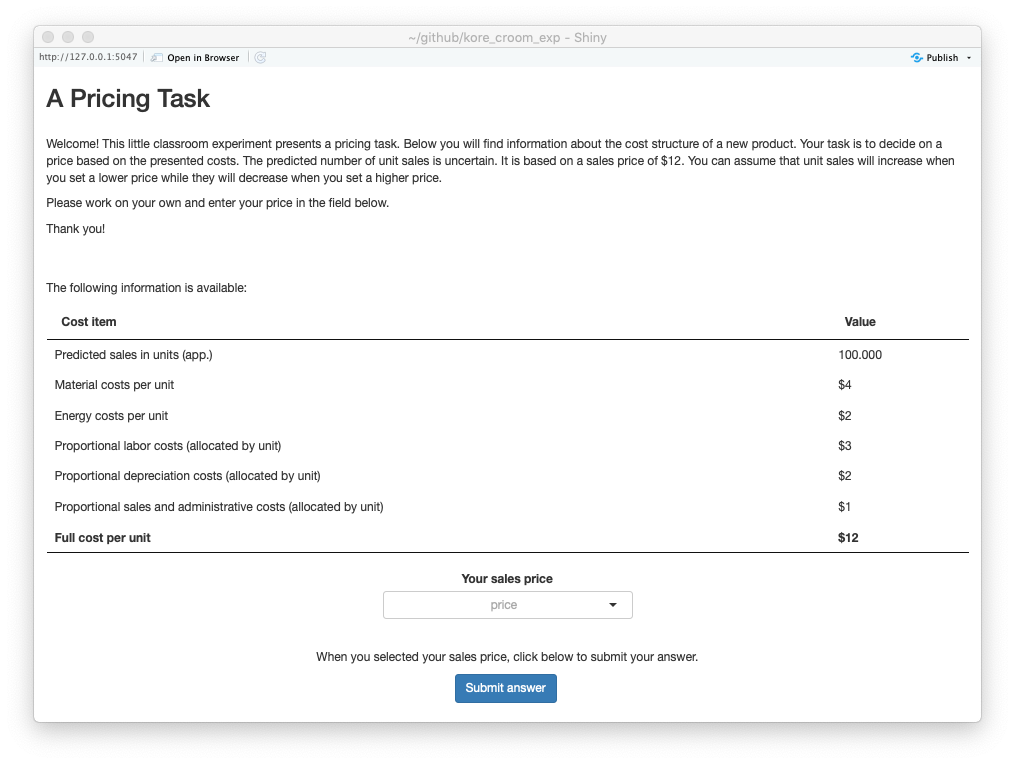A Shiny Classroom Experiment with Real-Time Results Presentation
Overview
Today, I used a shiny app to run a classroom experiment in the first class of my introductory cost accounting course. I uploaded code, data and materials to github so that everybody can reuse it to construct similar experiments and, of course, to replicate the results from our experiment.
The experiment tests whether cost allocation (variable cost or full cost) affects pricing decisions in a simple one product pricing setting.
This is the experimental treatment with variable cost information.

Experiment App, variable cost treatment
And this is the treatment with full cost information.

Experiment App, full cost treatment
In principle, both formats provide the same underlying information and thus, pricing should not differ across the two treatments if subjects rationally extract all available information.
Under the full cost treatment, however, fix costs are being allocated to units based on expected unit sales. Assuming that subjects use simple “cost plus” heuristics when setting their prices, this could imply that they are less likely to set prices below $12 when receiving the full cost treatment. Note that setting prices below $12 might very well be rational when demand reacts strongly to price as the increased unit sales can compensate for the loss in margin.
These are the results from our experimental run as presented by the real-time shiny result app:

Results App
You can assess the online version of our results here. At least for our students, it seems as if, in line with some prior literature, full cost accounting causes them to set higher prices. In real life, this might imply the risk of losing market share, eventually pricing oneself out of the market.
Replicating the analysis and reusing the code
The repository contains the data from our analysis as well as all the code that you need to set up the experiment on your own shiny server. I have included the English language version along with the original German language version that I ran in class.
If you want to re-run the exact same experiment in your class for didactical purposes and/or to replicate our findings, you can also simply reach out and I can provide you access to our shiny server so that you can run the experiment with your students.
If you want to use the code as a starting point for your own classroom experiments, here are some remarks about the code.
- The repository contains both shiny apps (
app_experiment_en.Randapp_restults_en.R) in one directory. Make sure to export them as two separate shiny apps in separate folders. - The file
croom_exp.sqlite3contains an emptySQLitedatabase to store the response data. The fileìnit_sqlite_db.Rcontains some code snippets that might be useful when working with the database. - When you want to use the real-time results feature, your result app needs to have access to the database file that the experiment app is writing to. When you are hosting this on your own shiny server this can be realized by the results app linking to the database file in the folder of the experiment app. If you plan to host your apps on a service like ‘shinyapps.io’ then this will most likely not be feasible. In this case, you might consider switching to an external database.
- When running this in a large class, your students might experience “Too many users” errors from shiny as shiny has a limit of 100 concurrent users for a given app. When running your own shiny server you can configure shiny to allow more users but my guess is that you will run into performance issues at some point. Another option (the one that I went with) is to ask students to be patient and hit ‘reload’.
- Finally, I whipped all this up relatively quickly, so I cannot guarantee that the code is error free and runs exactly as advertised. Please get in touch when you encounter something odd.
This is it. Let me know your thoughts and I would be very happy to get in touch if you are reusing the code for your own projects. In particular, I would be interested in hearing about people that replicate our experimental classroom result. Feel free to comment below. Alternatively, you can reach me via email or twitter.
Enjoy!
